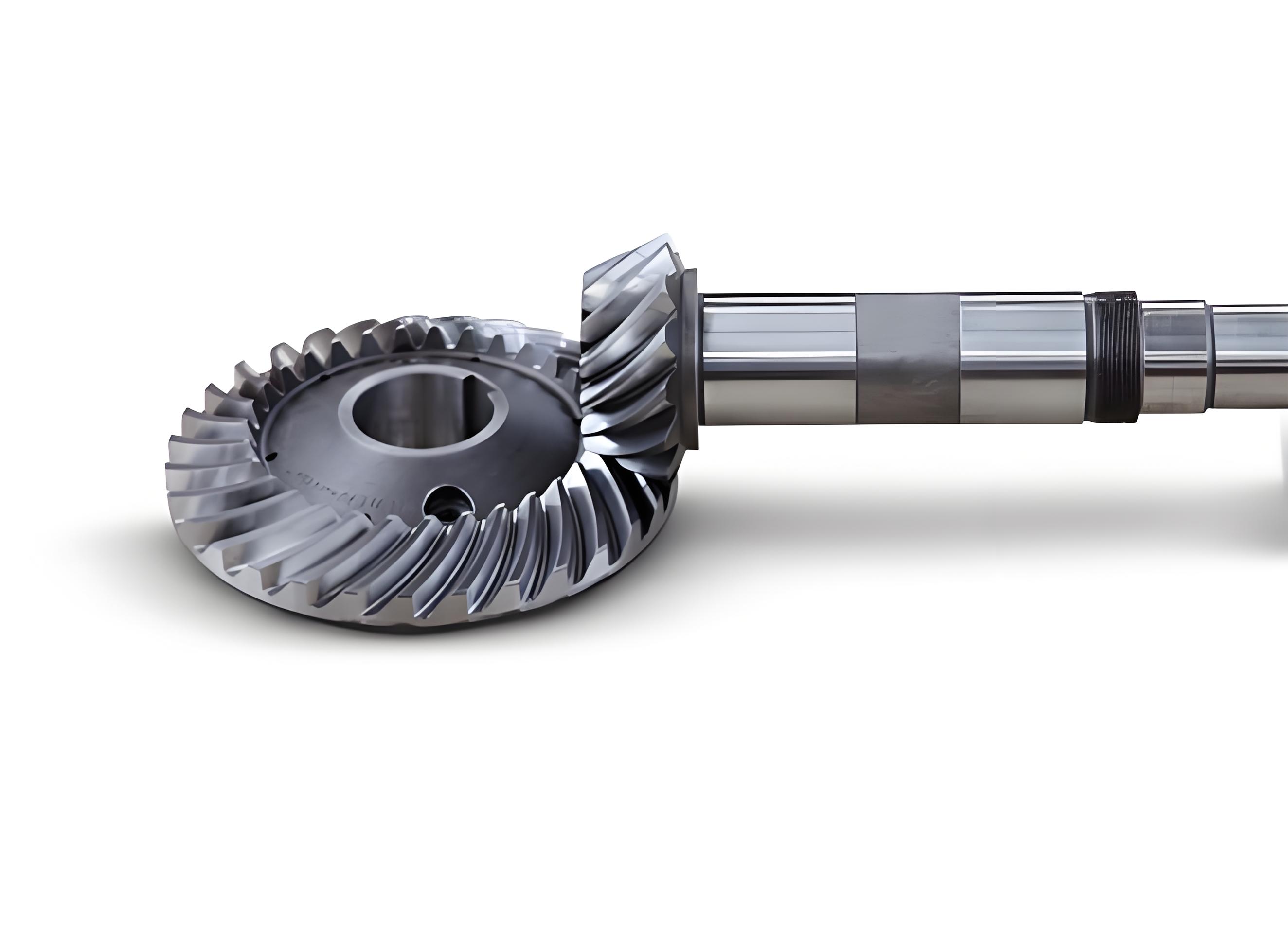
Abstract
Noise and vibration in spiral bevel gear can lead to reduced efficiency, increased wear, and potential failure in high-performance applications. This review explores various techniques to reduce noise and vibration, including design optimization, material selection, advanced manufacturing processes, lubrication, and active control systems.
Introduction
High-performance spiral bevel gear is critical in many applications such as automotive transmissions, aerospace mechanisms, and industrial machinery. Noise and vibration can compromise the performance and longevity of these gears. This review examines effective techniques to minimize noise and vibration, enhancing the overall performance and reliability of spiral bevel gear.
Design Optimization
- Tooth Profile Modification
- Involute Profile Optimization: Adjusting the profile of spiral bevel gear teeth to ensure smoother meshing and load distribution.
- Benefits: Reduces contact stresses, minimizes noise and vibration.
- Helical and Spiral Angles
- Optimization: Designing optimal helical and spiral angles to ensure gradual engagement and disengagement of teeth.
- Benefits: Leads to quieter and smoother operation.
- Micro-Geometry Adjustments
- Techniques: Applying modifications such as crowning and end relief to the tooth surface.
- Benefits: Compensates for misalignments and load deflections, reducing noise and vibration.
Material Selection
- High-Damping Materials
- Materials: Composites, advanced polymers, and high-damping alloys.
- Benefits: Absorb vibrational energy, reducing transmitted noise.
- Advanced Alloys
- Properties: Materials with high fatigue strength and wear resistance.
- Benefits: Maintain precision under load, reducing noise caused by wear and deformation.
Advanced Manufacturing Processes
- Precision Machining
- Processes: CNC grinding and honing to achieve high accuracy and smooth surface finishes.
- Benefits: Reduces surface roughness, leading to quieter spiral bevel gear operation.
- Surface Treatments
- Techniques: Shot peening, superfinishing, and cryogenic treatment.
- Benefits: Enhance surface hardness, reduce micro-pitting, and improve fatigue life, resulting in lower noise levels.
- Additive Manufacturing
- Innovation: Using 3D printing to create complex spiral bevel gear geometries with internal damping structures.
- Benefits: Customizable internal structures that reduce vibration and noise.
Lubrication
- Advanced Lubricants
- Types: Synthetic oils, nano-lubricants, and bio-lubricants with superior film strength and thermal stability.
- Benefits: Reduce friction and noise by providing a stable lubricant film.
- Additive Technologies
- Inclusions: Anti-wear, anti-friction, and extreme pressure additives.
- Benefits: Enhance lubricant performance, reduce gear noise, and extend gear life.
Active Control Systems
- Vibration Dampers
- Devices: Tuned mass dampers and viscoelastic dampers integrated into spiral bevel gear housing.
- Benefits: Actively absorb and dissipate vibrational energy.
- Active Vibration Control
- Systems: Using sensors and actuators to monitor and counteract vibrations in real-time.
- Benefits: Significantly reduces operational noise and vibration.
- Adaptive Lubrication Systems
- Technology: Intelligent lubrication systems that adjust lubricant flow and properties based on operational conditions.
- Benefits: Ensure optimal lubrication, reducing noise and wear.
Case Studies
- Automotive Transmissions
- Techniques Used: Tooth profile optimization, synthetic lubricants with advanced additives.
- Outcome: Noticeable reduction in noise levels and smoother spiral bevel gear transitions.
- Aerospace Gears
- Techniques Used: Precision machining, high-damping materials.
- Outcome: Enhanced performance with reduced vibration, leading to quieter operation.
- Industrial Machinery
- Techniques Used: Active vibration control, surface treatments.
- Outcome: Significant reduction in operational noise, increased spiral bevel gear lifespan.
Conclusion
Reducing noise and vibration in high-performance spiral bevel gear requires a multi-faceted approach involving design optimization, material selection, advanced manufacturing processes, and innovative lubrication techniques. Implementing these strategies enhances spiral bevel gear performance, extends their operational lifespan, and ensures reliable operation in high-demand applications.
References
- Journal of Sound and Vibration: Research on noise reduction techniques and vibration analysis in mechanical systems.
- Wear Journal: Studies on the impact of surface treatments and advanced materials on spiral bevel gear noise and vibration.
- Tribology International: Articles on advanced lubricants and their role in reducing spiral bevel gear noise.
- IEEE Transactions on Industrial Electronics: Papers on active vibration control systems and their applications in spiral bevel gear mechanisms.
This review provides a comprehensive overview of the latest techniques to reduce noise and vibration in high-performance spiral bevel gear, serving as a valuable resource for engineers, researchers, and industry professionals.
